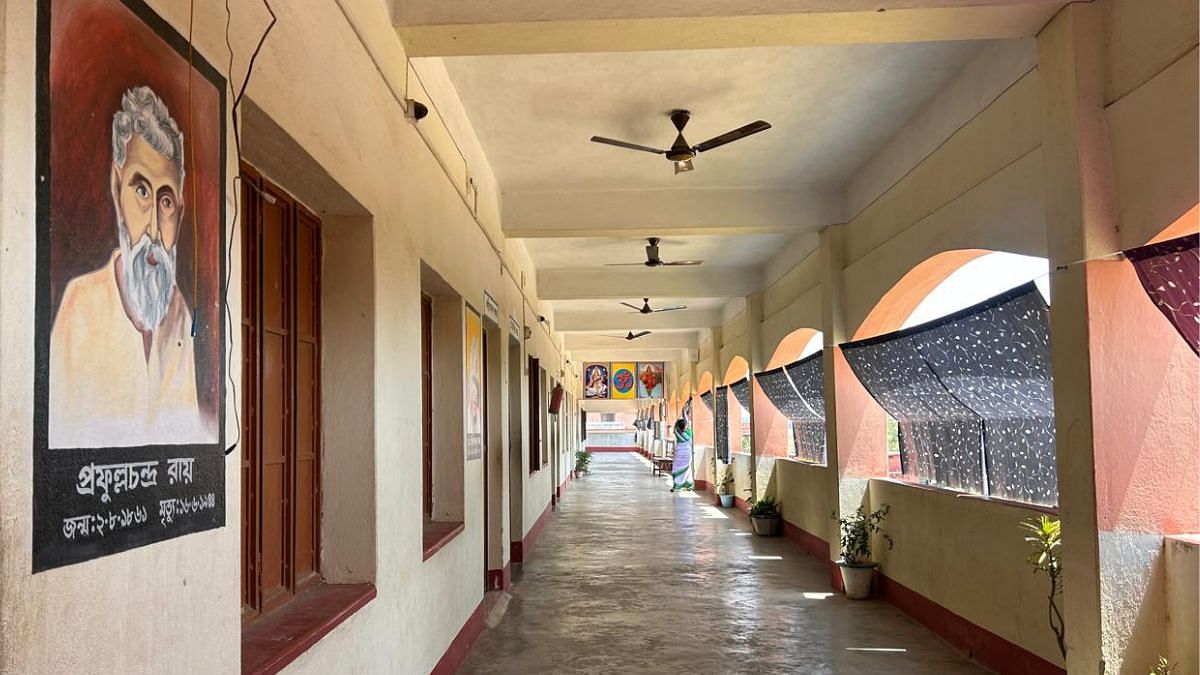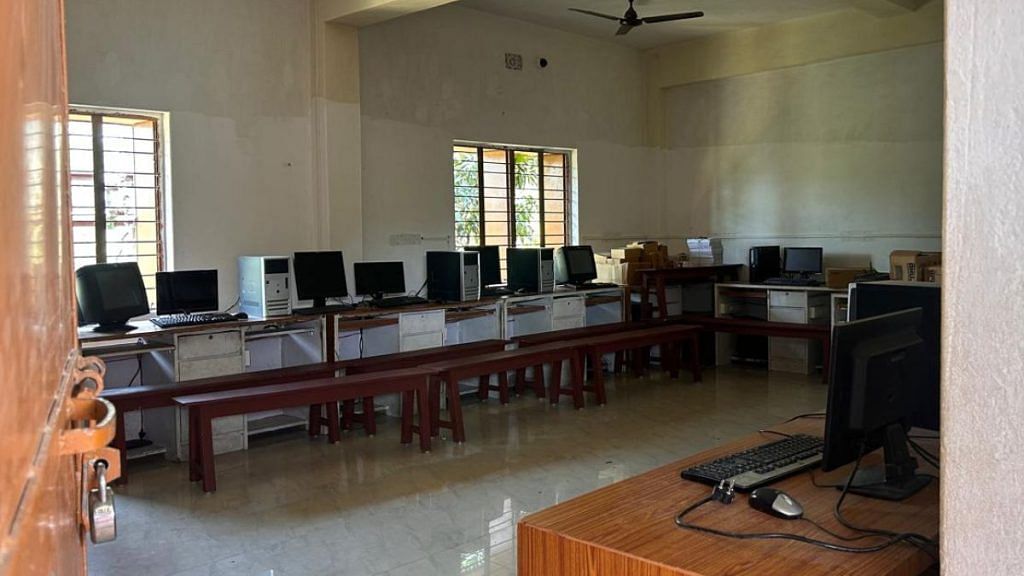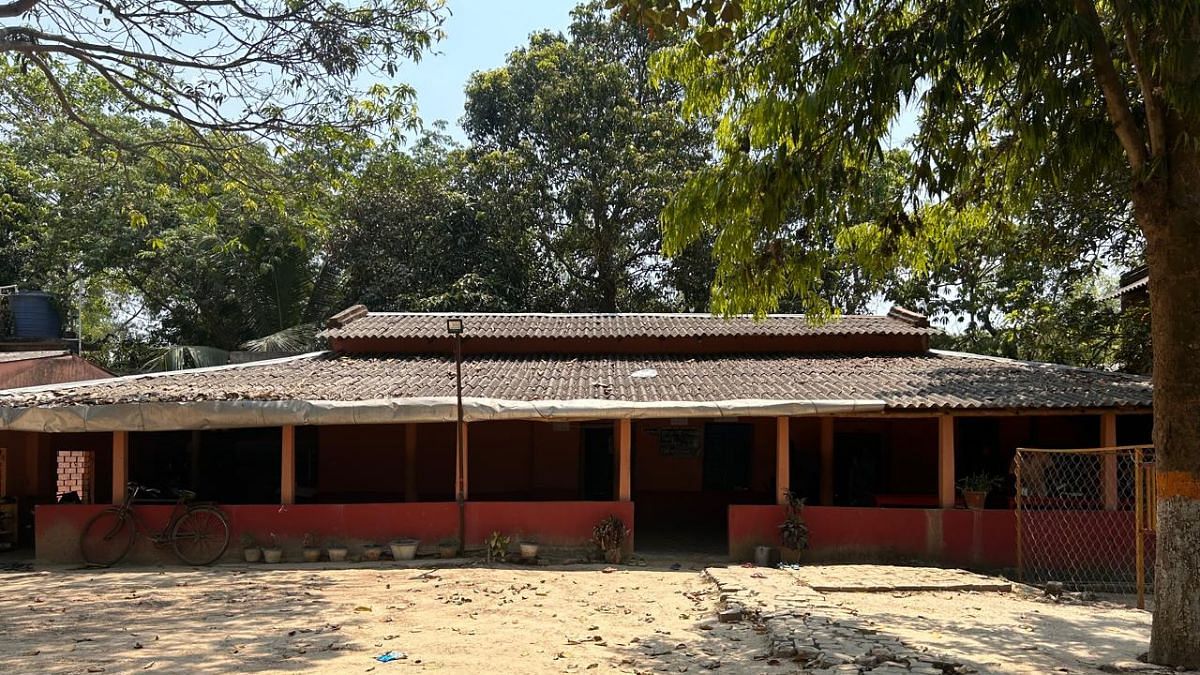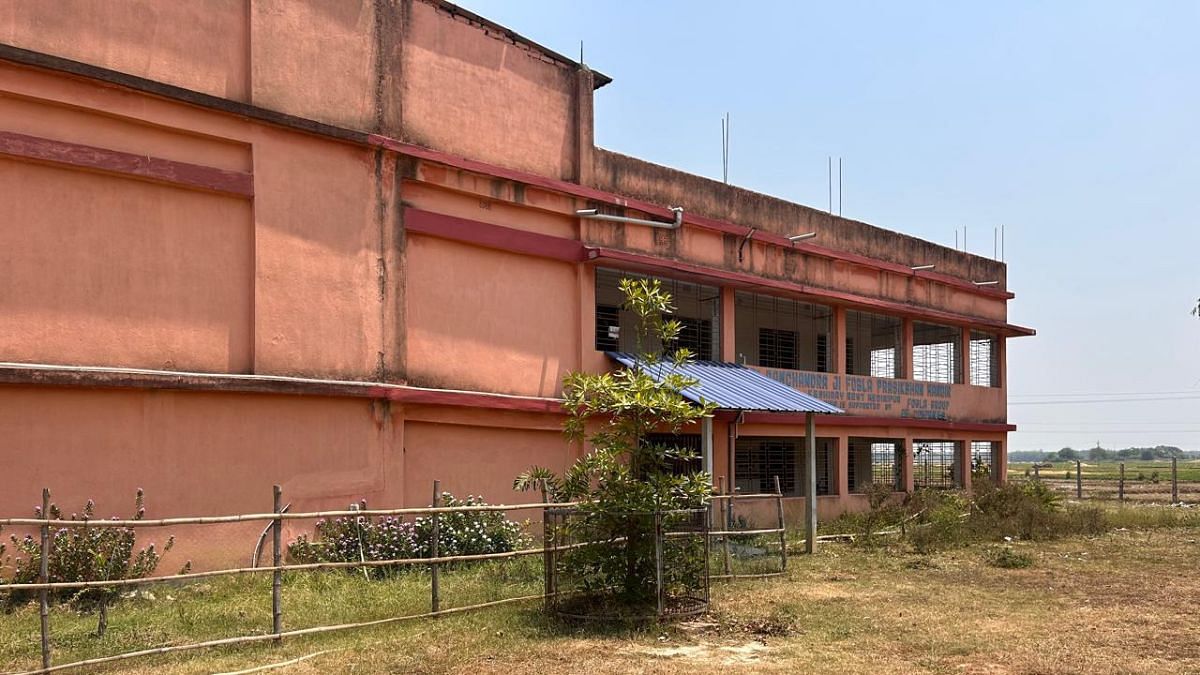Expanding on what the chief minister said, Trinamool Congress (TMC) MP Derek O’Brien told ThePrint how the RSS has grown and questioned its funding. “RSS ‘shakhas’ across India increased by 62 per cent between 2014-23. Is the RSS a registered entity? It is neither a political party, a company, nor a charitable trust. So, what is it? It collects funds worth millions from multiple undisclosed channels. Does it pay taxes?” he asked.
On his point about the RSS’s collections, the MP cited a paper titled ‘Hindu Nationalist Influence in the United States, 2014-2021: The Infrastructure of Hindutva Mobilizing’, which stated that “between 2001-2019, according to available tax returns, seven Sangh-affiliated charitable groups reportedly spent at least $158.9 million on their programming, sending much of it to groups in India” and that half of this $158.9 million was spent between 2014 and 2019.

A senior BJP functionary, on the condition of anonymity, said that the chief minister making such statements during the elections was neither surprising nor unexpected but also stressed that “Mamata has given the RSS full leeway”.
“That is why a large section of the organisation does not appreciate the BJP’s anti-Mamata narrative and (the party) has been asked to cool down sometimes. It’s more like live and let live. But during elections, statements such as these made by the CM are not taken to heart. RSS-run schools have a strong presence in North Bengal and the tribal belt of the state, and not without the state government nod,” he said.
Also read: For ‘mahila’ voters in Bengal, making ends meet is priority & Mamata ‘didi’ their main benefactor
Not the average school
West Bengal has roughly 92,000 students receiving an education in RSS-run schools, said members of Vidhya Bharti, the RSS educational wing.
Back in 2017, there were 109 RSS-affiliated primary schools in the state, with 66,090 students enrolled. The total number of schools has risen to over 300 now. These schools have flourished in the Malda, Coochbehar, and Nadia districts, an RSS member told ThePrint.
At one point, the rise in RSS-run schools also rattled the ruling Trinamool Congress. In February 2018, the then-education minister Partha Chatterjee attempted to crack down on these schools, those aware of the developments said. He said the government had identified 125 schools affiliated with the RSS, functioning without a no-objection certificate, and decided to ban them immediately. But that never happened after the Calcutta High Court intervened and stopped any such move.
According to Jisnu Basu, General Secretary, RSS, Dakshin Bangla, the schools run by Vivekananda Vidyavikash parishad, which is under the administrative control of Vidya Bharati, have gained immense popularity over government-run schools, especially in the rural areas.

“The only link RSS has with Vidya Bharati is that a few Swayamsevaks hold strategic posts in Vidya Bharati. The schools have found takers among parents in Bengal, keeping aside their religion and political affiliations, mainly because the education system in Bengal is miserable,” he said.
“Almost the entire education department has been facing heat over the School Service Commission (SSC) scam (in which candidates were selected from outside the SSC panel). It (government) has failed to govern the education system. The Vidhya Bharati-run schools are comparatively well-managed, the teachers stay dedicated, and the education (quality) is not compromised,” he told ThePrint.
However, what has irked the ruling Trinamool Congress could be the RSS’s presence in the political space of West Bengal. “The RSS is actively protesting and organising people against misrule and injustice. The RSS played a role in Sandeshkhali because tribals were getting overlooked. The TMC is a party with no set ideology. Meanwhile, the RSS is not a political organisation, with ‘swayamsevaks‘ who are fearless, dedicated, and honest. That’s why the TMC has fears over the RSS,” added Basu, also a Saha Institute of Nuclear Physics engineer.
Also read: ‘Who else is there to vote for?’ — why Muslim clerics are rallying behind TMC in West Bengal
‘What good is education, if you can’t respect religion?’
The Medinipur region, a part of Bengal’s tribal belt, comprises five districts — Bankura, Jhargram, Purulia and Paschim and Purba Medinipur. In 2019, the BJP won five of the eight seats in the region, with the TMC bagging the remaining three. The BJP’s Dilip Ghosh, who began his political journey as an RSS pracharak in 1984, is the Medinipur sitting MP. In the last Lok Sabha polls, he defeated TMC’s Manas Ranjan Bhunia by over 88,000 votes. However, in this Lok Sabha election, the BJP has fielded Mahila Morcha president and sitting MLA Agnimitra Paul against TMC’s actor MLA June Malia in Medinipur and shifted Ghosh to contest the Bardhaman-Durgapur seat.
According to political analyst and ‘Mission Bengal: A Saffron Experiment’ (2020) author Snigdhendu Bhattacharya, the West Bengal chief minister might express her concerns over the RSS but does nothing to build awareness among her party organisers.
“The number of ‘shakhas’ does not reflect the growth properly as there have been greater expansions in their social work projects, in which schools play an important part. Schools run by Vidya Bharati and hostels operated by Vanvasi Kalyan Ashram (which focuses on tribal welfare under the umbrella of RSS) often play as centres of a range of activities, including promoting cow-centric village economy, popularising ‘Ramkatha’ and ‘Harikatha’ recitals, forming groups of mothers over yoga, ‘Gita path’ or ‘Hanuman Chalisa’, and broadening their engagement with annual health camps and providing free tuition to schoolchildren,” said Bhattacharya, who has researched extensively about the RSS in Bengal for his book.
Bhattacharya said Keshiyari, where the RSS runs its primary (Shishu Mandir) and secondary (Vidya Mandir) schools, is categorised as one of RSS’s model villages under a pilot development project.
“Banerjee sounds concerned because the programmes aim at moulding society into the fold of Hindu conservatism. But, due to the party’s lack of awareness of the RSS, TMC leaders often send their children to RSS-run schools and coaching centres,” he added.
Started in 1992 from a small photo-framing shop converted into a classroom for seven-odd students by Tarun Hati, the school got its permanent two-storey buildings only recently in 2016. Now, it has 635 students— 410 between classes 1-5 and 225 students till Class 10. The school is affiliated with the West Bengal Secondary Education Board now. The students take the Class 10 or Madhyamik board exams under the board.

However, Shishu Mandir and Vidya Mandir are not like government schools. On January 22, when the Ram Mandir consecration was taking place, the school used a projector to stream the event for the students, said Bishnu Sahoo, a member of the Vidya Vikas Parishad — a trust which claims affiliation with the RSS-backed Vidya Bharati Akhil Bharatiya Siksha Sansthan. “It was a day of national pride for us all,” he added.
“What good is education if you cannot respect your religion, your nation and your parents?” he asked, saying students from the beginning learn to touch the feet of their elderly at home and bow their heads with folded hands before teachers, who they call ‘didibhai‘ and ‘dadabhai‘.
Also read: BJP’s threats to TMC’s protests—political tactics lose punch in Bengal. Voters are watching
‘RSS schools don’t pose a threat in Bengal’
According to the school administration, the students come from the Scheduled Castes and Scheduled Tribes families in adjoining villages and nearby districts. “Once, a mother came to us and said when she took her daughter to a government school for admission, it demanded a donation of Rs 35,000. Where does one get that money from working in the fields? Here, we charge a development fee of Rs 500 during admission, and the monthly fee for classes 1-5 is Rs 300 a month,” said Bishnu Sahoo.
In the school, large photographs of ‘Bharat Maa’ and ‘Saraswati’ hang in the corridor on the first floor. In this corridor, the students perform the morning ‘vandana’ before they go to their classrooms, named after Vivekananda, Prafulla Chandra Ray, and APJ Abdul Kalam.
It is in the corridor that students mark their birthdays as well. “We put sandalwood paste, garland the student, and celebrate the birthday by distributing ‘nokuldana‘, a local sweet offered to Gods after prayers,” said Anup Kumar Jana, ‘pradhan acharya (principal)‘ of the school.
The school has a computer lab. There are plans for a chemistry lab as well. “We run the school on donations. The computers were given to us by a former professor of IIT-Kharagpur. Though these are old desktops and four students have to share one, we try to teach the best way, so when students step out of the school, they too can compete with others,” added Jana.
He told ThePrint that past pupils of the school have gone on to become doctors, engineers, and government officers, and last year, one even ranked among the top 10 in the state-level Class 10 examination.
According to political analyst Udayan Bandopadhyay, an associate professor at Bangabasi College, these schools do not pose any direct threat in West Bengal.
“The Sangh is running schools across the country. But, to indoctrinate people with an ideology, there have to be groups of people who might support the ideology. Also, objective conditions help that endeavour— this is true for tribals in Odisha or Meiteis in Manipur. A hate campaign against religious practices that fall in the way of other religious practices can work as well. But, this threat is absent in Bengal despite a sizeable number of madrasas here. Without schools near them, several Hindu students study in the madrasas. But they have not been converted. The search for ‘otherness’ is not there in Bengal,” he said.
Also read: ‘Mamata fighting solo’—Parakala Prabhakar’s Kolkata book launch turns into attack-Modi event
‘She sends sweets & then targets us’
The school in Keshiary hosted RSS Chief Mohan Bhagwat for four days in 2022, a year after the TMC returned to power for a third term in Bengal. Bishnu Sahoo said the local inspector came with sweets for Bhagwat on behalf of the TMC administration.
The school administration is fond of showing off a Rudraksha tree planted on its premises when Bhagwat was on the campus. The tree has now started bearing flowers.

“We don’t understand her (Mamata’s) statements. She sends sweets and says RSS has good people and then targets us. Under her government, our schools have received no-objection certificates. We have not faced any problem running our schools in the state,” added Bishnu Sahoo.
He also said that in 2018, former TMC MP Mukul Roy, while jumping ship to join the BJP, donated funds to the school to build classrooms. A few years later, Medinipur MP and then BJP Bengal Chief Dilip Ghosh gave Rs 10 lakh from his Members of Parliament Local Area Development Division (MPLAD) funds to build the boundary walls of the school, he added.
Speaking to ThePrint, former governor of Meghalaya and right-wing thinker Tathagatha Roy said the schools are fuelled by RSS ideology, and if they benefit the BJP, it’s a bonus.
“Ancient India had the ‘gurukul’ system, now replaced with various educational institutes. For example, I have studied in a missionary school. But these Shishu Mandirs are being fueled by RSS ideology, in which discipline is the biggest lesson. These schools have no links to the BJP in any way, but, if at all, the BJP benefits from their work in interior Bengal, it is incidental,” he said.
In Keshiary, RSS functionaries in charge of the Shishu Mandir hold ‘adhyapak sampark’ or meet the parents in the villages from where the students come. “This exercise takes place thrice annually. We go door to door and speak to the guardians. They tell us problems they are facing and sometimes give us suggestions to improve students’ lives,” said Anup Jana.
According to Jana, the Keshiary Shishu Mandir alone has seen a 200-student jump in this academic session, which began in January.
Speaking with ThePrint, West Bengal Education Minister Bratya Basu claimed he had no such information. “I don’t know how many RSS-affiliated schools there are in West Bengal, and I have to go back and see what the chief minister has said,” said Bratya Basu.
(Edited by Madhurita Goswami)
Also read: Political start-ups need Mamata’s courage, NTR’s charisma & Kejriwal’s smart thinking

